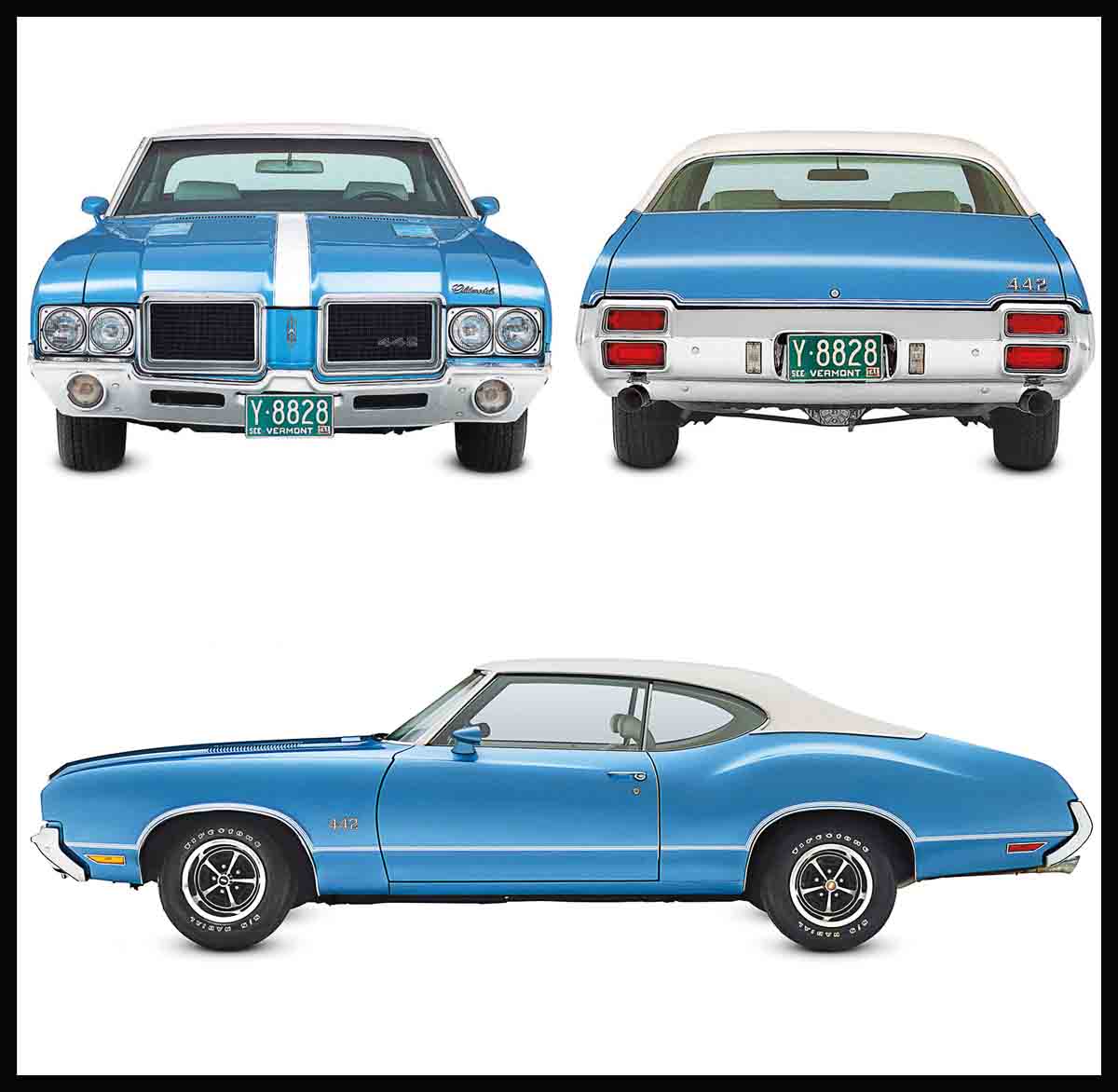
Muscle Cars
American motoring muscle reached its zenith at the start of the 1970s. V8 engines were bigger than ever before, and delivered unprecedented power. The fastest and rarest muscle cars were the specials built for NASCAR racing, such as the aerodynamic Dodge Charger Daytona and Plymouth Road Runner Superbird, but most muscle cars were built for on-street show rather than race-track go. The era of the muscle was soon over, however, thanks to emissions concerns and rising insurance costs. Then came the impact of the oil crisis in 1973. Performance cars would be back, but they would never be quite the same again.
Oldsmobile 4-4-2, 1970

| Origin | USA |
| Engine | 7,456 cc, V8 |
| Top speed | 120 mph (193 km/h) |
The 4-4-2 was launched in 1964; the figures signified a four-barrel carburettor, four-speed gearbox, and dual exhaust pipes. This was a standalone model from 1968-72, though its vast 455 cu in engine became standard in 1970. The same year a 4-4-2 was used as pace car at the Indy 500.
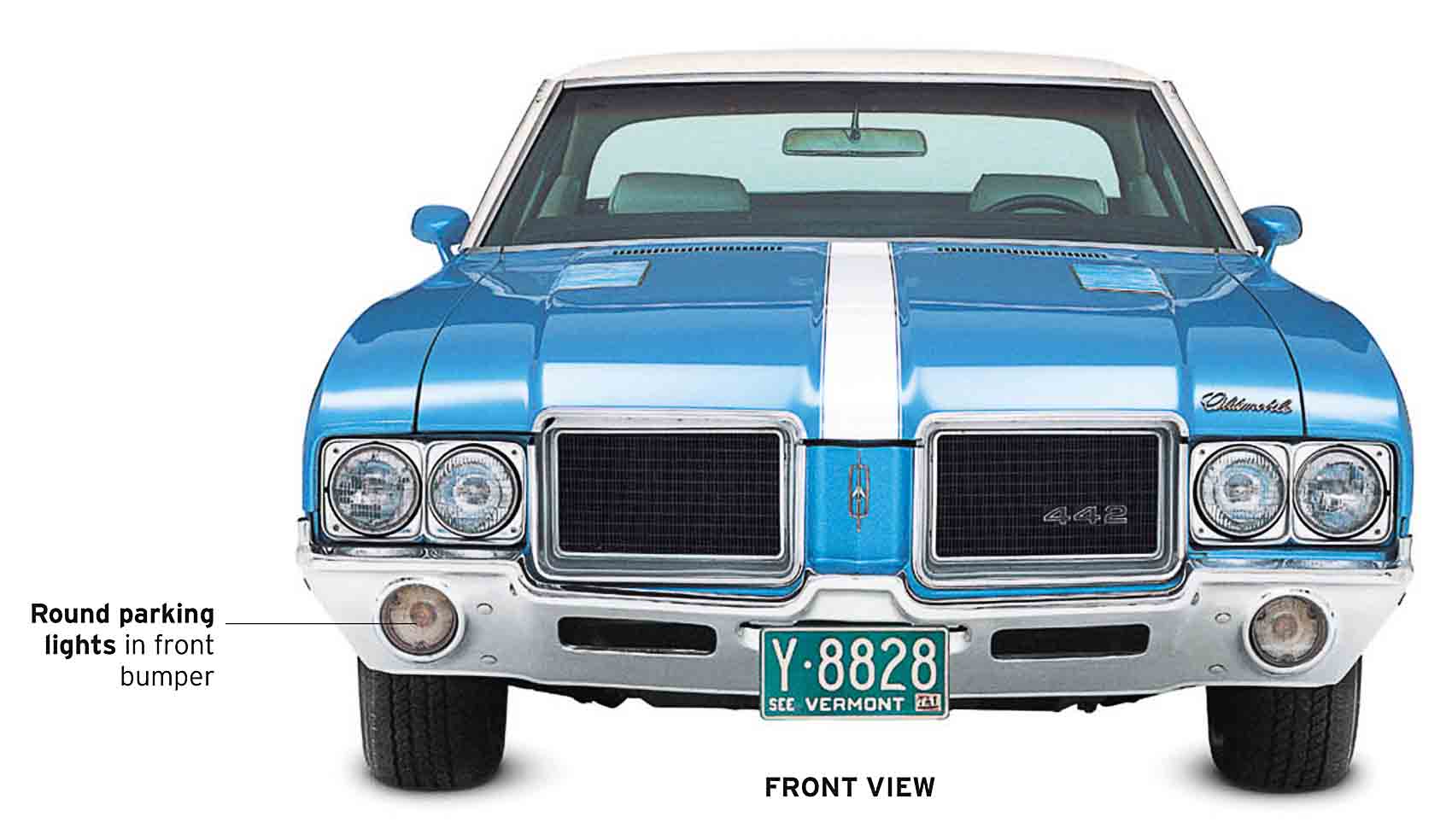
Optional extras
This was already an impressive machine, but new owners could still specify even more extras to enhance the car’s performance. Options included upgrades to the gearbox, rear axle, brakes, and steering. A weight, saving fibreglass bonnet was also available.
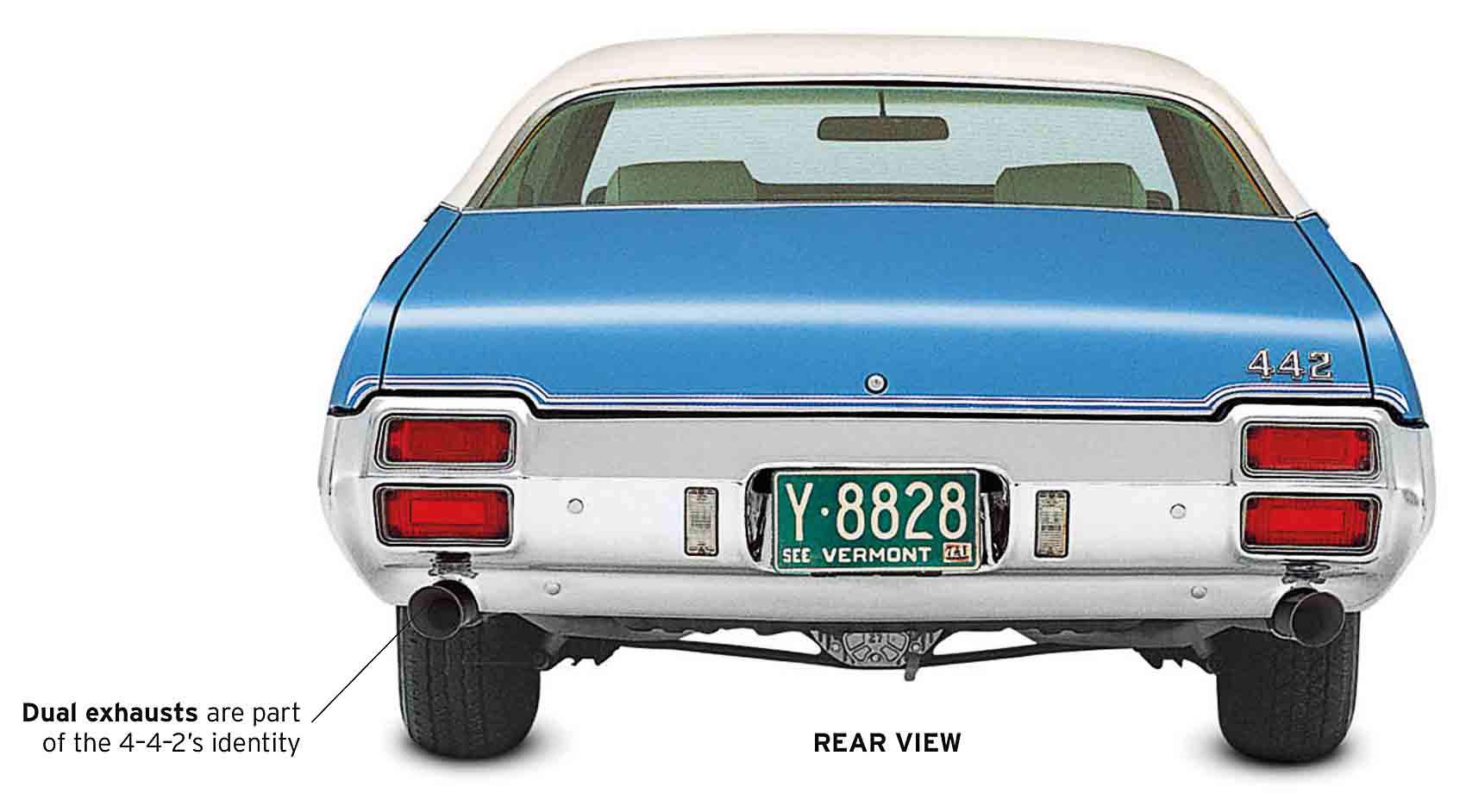
Hidden power
In marked contrast to the aggressively styled front end, the elegantly sloping rear was more subtle. Only the 4-4-2 badge and twin exhausts gave away the fact that this was a muscle car.
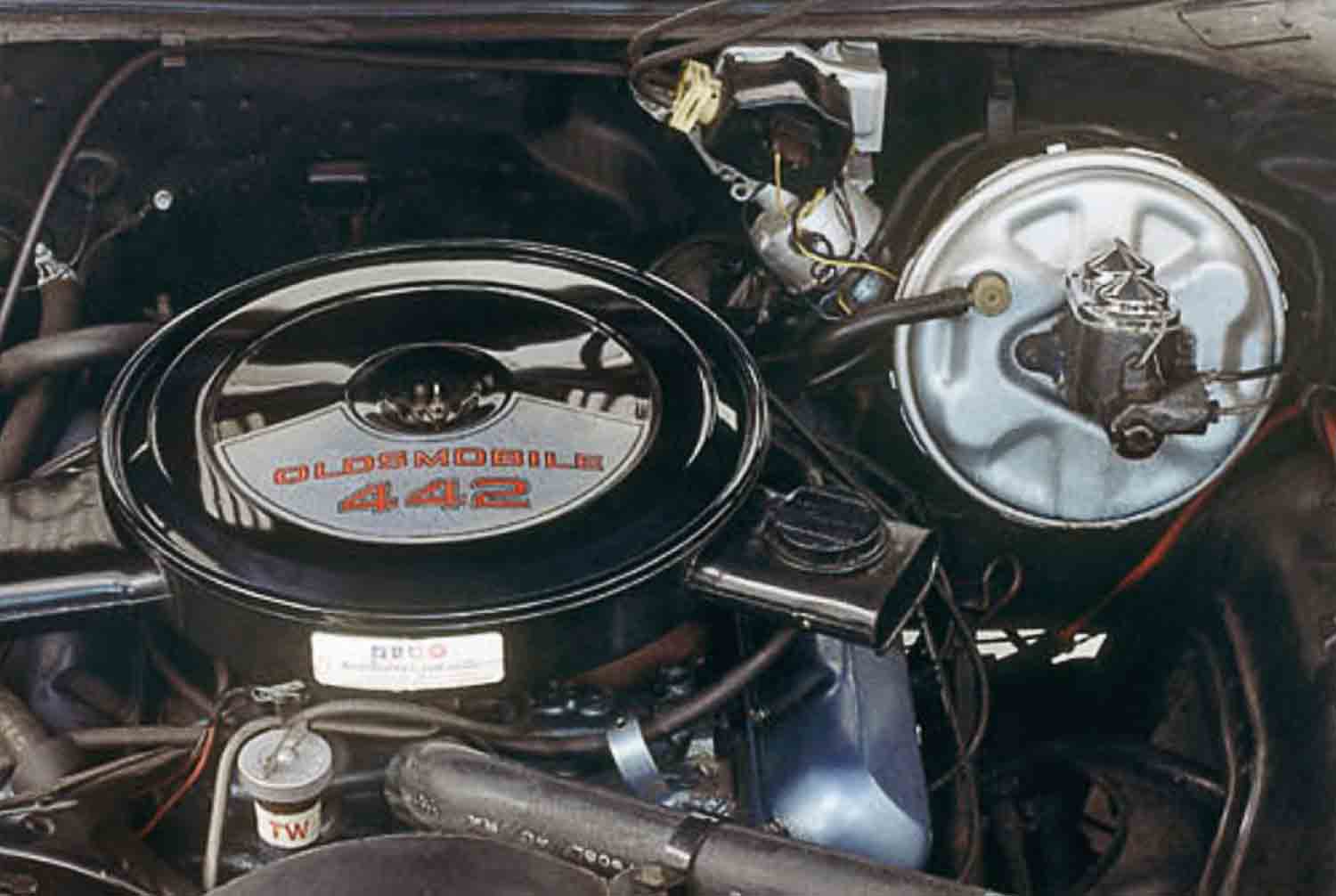
Peak power
“Factory blue-printed to save you money”, screamed the ads. The monster 455 cu in V8 was stock for 4-4-2s in 1971, but that was its swan song year. Power output would soon dwindle as emissions controls kicked in and the use of unleaded petrol demanded lower compression ratios.
Plymouth Road Runner Superbird, 1970
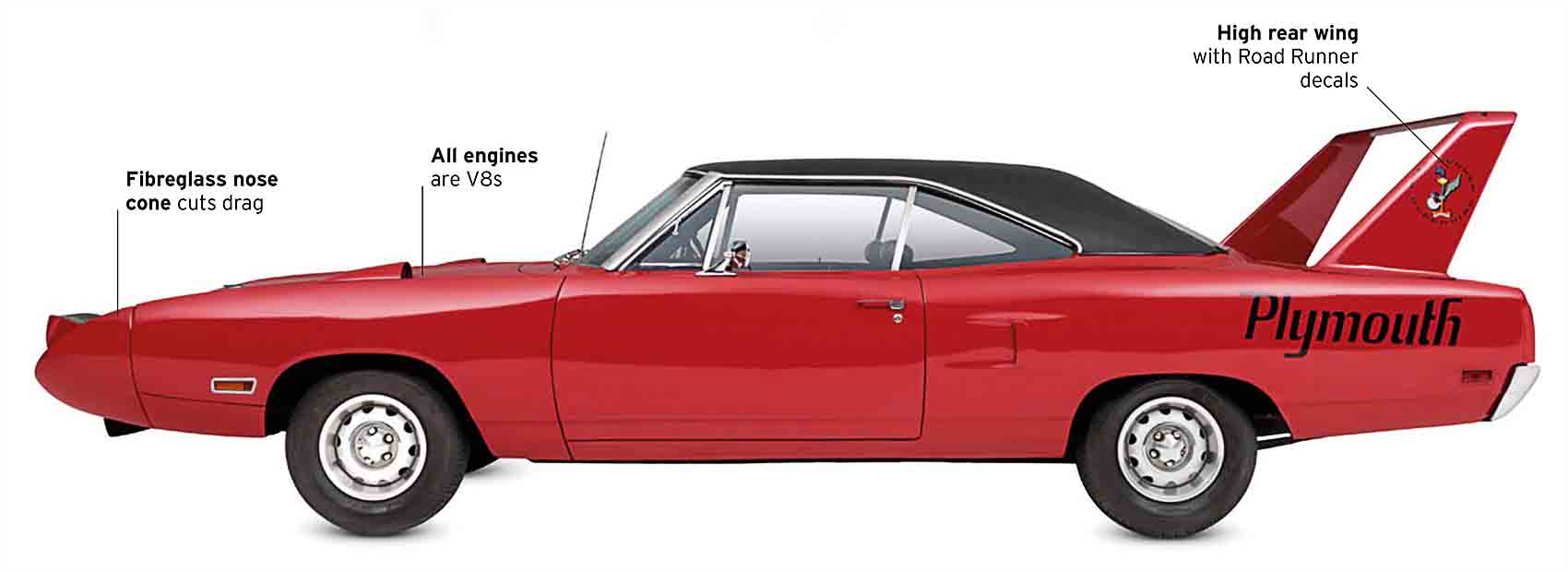
| Origin | USA |
| Engine | 7,213 cc, V8 |
| Top speed | 130 mph (209 km/h) |
A NASCAR racer made road-legal, the Superbird was endorsed by the Looney Tunes cartoon character The Road Runner and even had a “meep-meep” horn. Around 1,900 of these winged wonders are believed to have been built. Only 135 of those were fitted with the most powerful 426 Hemi engine.
Dodge Challenger R/T 440, 1970
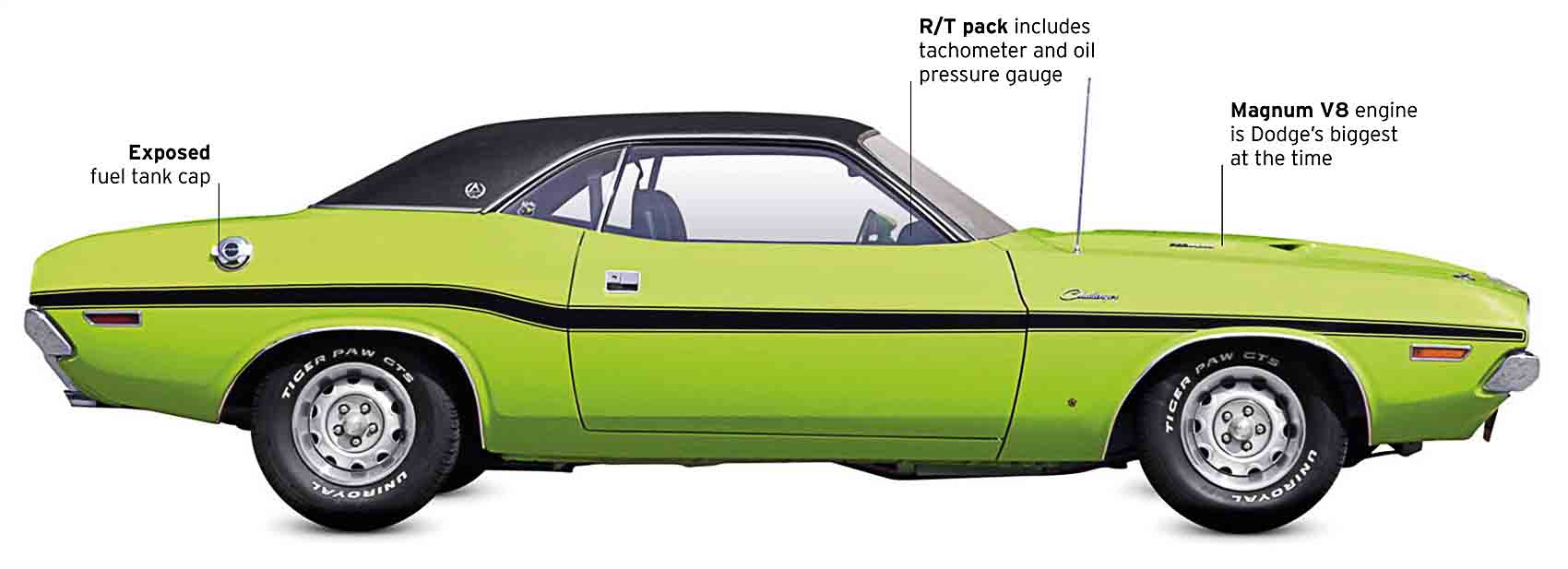
| Origin | USA |
| Engine | 6,276 cc, V8 |
| Top speed | 114 mph (183 km/h) |
Dodge’s late arrival onto the muscle-car market was a practical hardtop coupe. Electric acceleration was assured by a 7.2-liter engine option, which boosted its power from 300 bhp to 385 bhp. This car was made famous by its starring role in the 1971 film Vanishing Point.
Chevrolet Nova SS, 1971
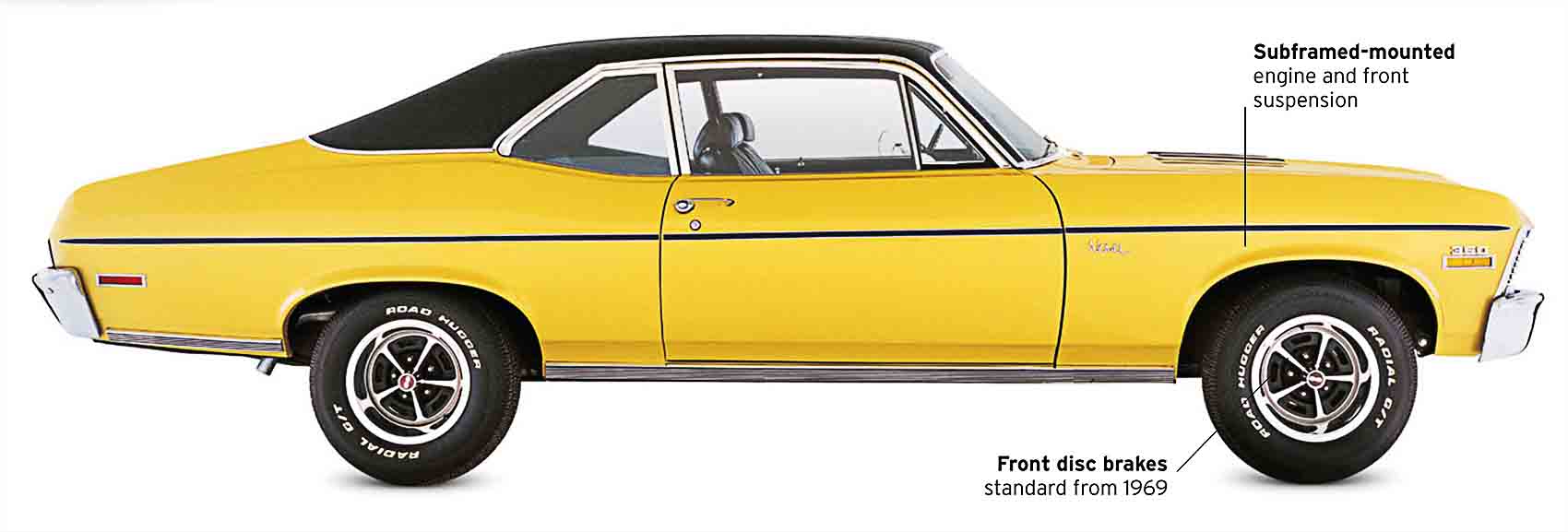
| Origin | USA |
| Engine | 5,736 cc, V8 |
| Top speed | 107 mph (172 km/h) |
At first this model was offered only as a signature performance package, but fitting V8 engines into the car from 1968 made the Nova SS (Super Sport) the fastest of the compacts. Capable of reaching 0-60 mph (96 km/h) in under 6 seconds, its abundant wheelspin and heavy steering only boosted the car’s macho appeal.
Pontiac Firebird Trans Am, 1973

| Origin | USA |
| Engine | 7,459 cc, V8 |
| Top speed | 132 mph (212 km/h) |
This model was often distinguished by a huge decal on its bonnet depicting a phoenix. The Trans Am was named after the racing series in which the first-generation Firebirds excelled in the late 1960s, even though the Trans Am’s engines were too powerful for it to compete in the series itself.
It is a quote. The Classic Car Book – The Definitive Visual History 2016




